#horse in hindu mythology
Text
Horses in Indian and Hindu Mythology

Aśva (अश्व)—Sanskrit word for the animal “horse”.
Aśva—The horse is said to have been born of the Creator’s feet.
The word for horse in Vedas is vaja. It is derived from the root vaj or uj, which also gives the word, vajra which means hard and mighty; it is also the name of Indra’s celebrated weapon with which he reduces his foes.
Thus, the word stands not only for the horse but also for the strength, speed, and impetuosity of a horse and for the general ideas of power, energy, swiftness, heroism, virility, and invincibility in war. The horse in Vedas symbolizes energy.
In Vedic Astrology, Ashwini Nakshatra is the first Nakshatra among the 27 Nakshatras, falling under the zodiac sign of Aries.
The word Ashwini means 'horse-like' or 'one who possesses horses' or 'one who tames horses'.
Aśva represents the number 7 in the “word-numeral system” (bhūtasaṃkhyā), which was used in Sanskrit texts dealing with astronomy, mathematics, and metrics, as well as in the dates of inscriptions and manuscripts in ancient Indian literature.
tip me via paytm : aashi2@paytm
— to know more about significance of horses in hindu mythology,
check the full post here 🧡
#horses#ashwini nakshatra#veda#rig veda#astrology community#astro community#vedic culture#vedic astrology#vedas#hindu mythology#indian mythology#indian culture#hinduism#aśva#horse in hindu mythology#astroblr
49 notes
·
View notes
Text
#polls#random polls#tumblr polls#my polls#a poll a day#vote#voting#dailyprompt#please vote#horses#horse#greek mythology#norse mythology#magic creatures#hindu mythology#celtic mythology#james bexter#adventure time
25 notes
·
View notes
Text
Names of Arjuna's Chariot Horses
#arjuna#krishna#lord krishna#sri krishna#arjuna chariot name#arjuna chariot horses names#mahabharata#pandavas#hinduism#hindu mythology#hare krishna#sanatandharma#iskcon#hindusim
6 notes
·
View notes
Text
Similasis Ep 1
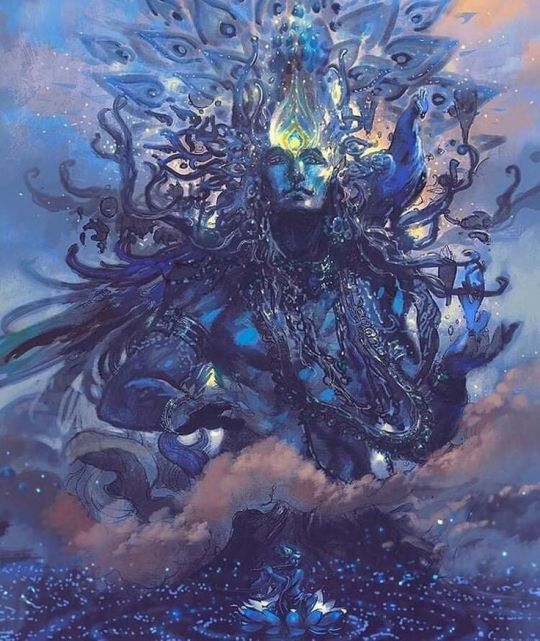
You knows just wild? How similar different mythologies and religions are to each other. That's why I'm gonna be doing this series, called:
Similasis
Or "Similologies" if you want.
But yeah, I'm just gonna be talking about different mythologies and their interesting similarities. Some may seem like stretches at first, but I feel like that's just part of the fun!
This first, "pilot episode" will be about:
Hinduism and Greek Mythology
So, let's start off with Krishna (Hinduism) and Herakles (Greek Mythology).
They're both "descended", in a sense, from one of the ultimate divinities in their respective pantheons; Krishna is the "avatar" of Vishnu, the Sustainer, while Herakles is one of Zeus' most popular children. They're also both incredibly powerful, with Krishna basically being a God on Earth, and Heraes having incredible strength.
From birth, they were also hunted and hated by a family member; for Krishna, it was his uncle Kansa, because of a Prophecy saying that Kansa would die at the hands of his sister's eight child. For Herakles, he was hunted by his stepmother, Hera, in her attempts to retaliate against Zeus for cheating.
As such, both faced, and defeated, assassination attempts at a young age. The she-demon Putana, sent by Kansa, attempted to breastfeed Krishna with her poisoned milk, but the young Godling bit down hard and simply sucked her dry (power move fr). On the other hand, Hera sent snakes to kill Herakles, which the child strangled with ease.
This isn't shown much in modernity, but both Krishna and Herakles were well-known for their wit and cunning; Krishna would always use his intellect to trick and confuse his adoptive mother Yashoda Ma, while Herakles has used incredible punishment to escape punishment and retribution in the past.
They've both also shown incredible feats of strength. When Vrindavan was being flooded by Indra Dev, Krishna lifted the Mount Govardhan with his little finger, so it acted like an umbrella. Similarly, while completing his Twelve Labours, Herakles held the sky on his back to allow Atlas to get him some apples.
Another major similarly is how similar the Mahabharata (Hinduism) and Trojan War (Greek Mythology) are. Many of the prominent characters share similar aspects, for example Arjuna (Mahabharata) is quite similar to Archilles (Trojan War), as they both refuse to fight (for admittedly different reasons), but eventually, due to a personal loss (Arjuna's son Abhimanyu, Achilles' lover-friend Patroclus), they both join the fray. Both Krishna and Achilles, two of the strongest beings in their wars, are also killed by an arrow to the heel. Achilles is also quite similar to Duryodhan, as they both were given blessings from their mothers (special armour for Achilles, stone body for Duryodhan) that were supposed to protect them from harm, but still didn't fully save them, due to a fatal weak point.
Of course, there are lots of other similarities between them, but for now, I think this is more than enough. Have a great day!
- Smylee
Edit: I almost forgot, both Achilles and Arjuna crossed dressed before. OK now I'm done.
#mythology#nerd alert#nerd stuff#hinduism#greek gods#greek pantheon#greek mythology#hindudharma#hindu mythology#mahabharata#trojan war#trojan horse#the illiad#achilles heel#patroclus#krishna#heracles#vrindavan#krishna vrinda vihari#arjuna#percy jackson who?#arjun is daddy#achilles was a twink#twelve labours these balls#analysis#similogies#similasis#smythologies#hindu myth memes#hindu
18 notes
·
View notes
Text
My mom bought me this book for Christmas
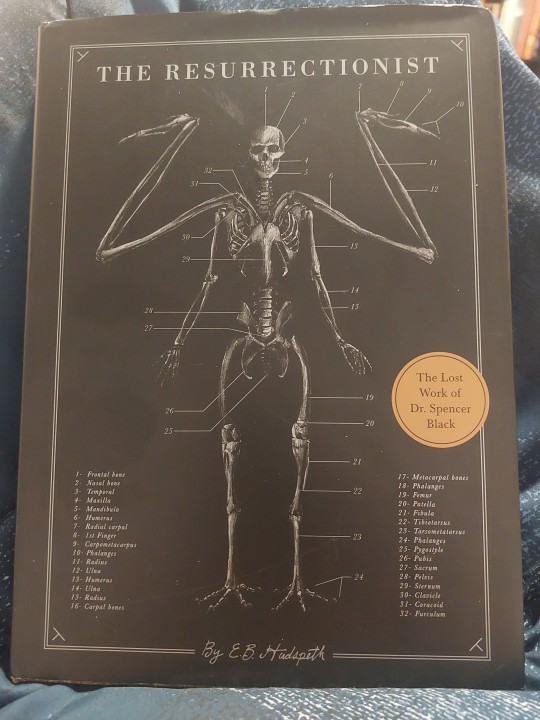
The Resurrectionist by EB Hudspeth, a fantasy field guide full of anatomical illustrations of monsters and cryptids.

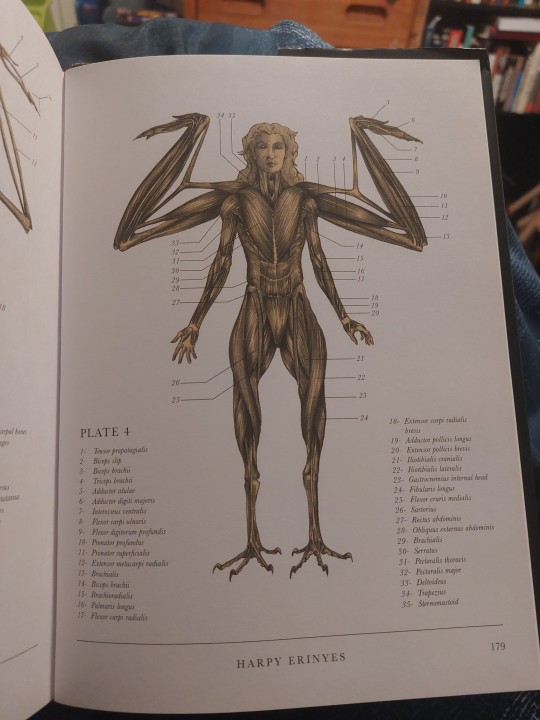
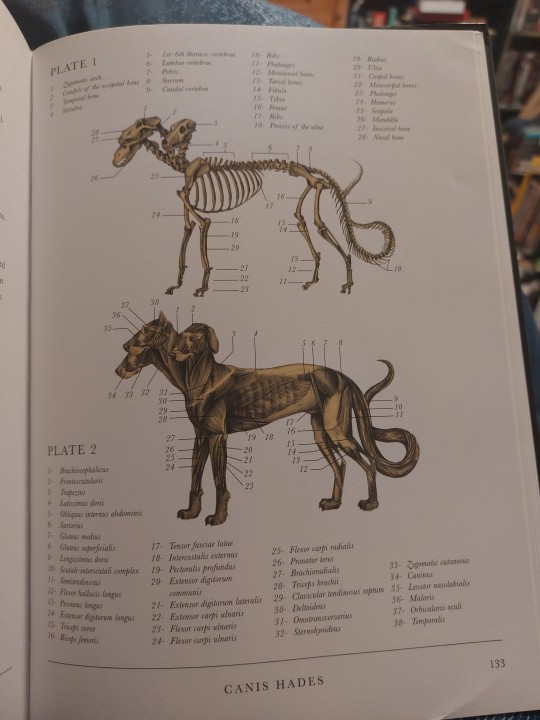

The musculoskeletal systems are fun to look at, but not nearly as in-depth as I would have liked. If you have more than a passing knowledge of taxonomy (or in my case, access to Wikipedia), a lot of the details fall apart under scrutiny
The harpy has four upper limbs connected to one shoulder girdle; it shouldn't have arms, only wings
The sphinx is not classified as a mammal, but is still somehow in the family Felidae with cats (and like the harpy is also drawn with only two girdles despite having six limbs. I will give the author credit for giving the sphinx a keel for the wing muscles to attach to)
It lists the Hindu deity Genesha as a cryptid, which is a no-no.
Cerberus is also explicitly not a mammal, but somehow still a canine (literally in the species Canis with wolves, dogs, and coyotes)
Both mermaids and dragons are listed as members of the order Caudata; the only extant members of Caudata are salamanders, which kinda makes sense for dragons, but not so much for mermaids (also, the author keeps playing it fast and loose with cladistics; both mermaids and dragons are in the same order despite being in different classes, and while dragons are explicitly said to be amphibians, mermaids are given the fictional class mammicthyes, which means mammal-fish. At that point, why not just call mermaids amphibians? Why make up a fake latin hybrid name?)
But what bugs me most of all is the classification of the Minotaur as its own order of mammal when in mythology it is explicitly described as a hybrid of two known species (made possible only by the cruel machinations of the divine, but still)
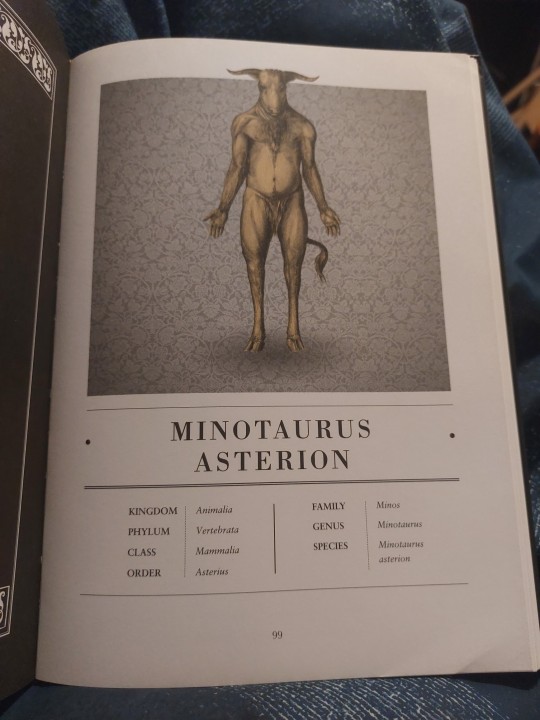
To use actual taxonomical nomenclature, the minotaur's species would be B. taurus × H. sapiens (specifically B. taurus♂ × H. sapiens♀; there are, to my knowledge, no legends of H. sapiens♂ × B. taurus♀). That's how ligers, tigons, mules, zorses, pizzly bears, narlugas, etc., are described.
If I had written this book, I would have leaned more into evolutionary biology. Most land animals have four limbs because they all evolved from boney lobe-finned fish, which split off from the boneless sharks and rays millions of years earlier, so any six-limbed vertebrates would need to be descended from a fictitious category of six-finned fish which would either be an offshoot of boney fish/tetrapods (I guess they'd be hexapods, though that term refers to insect arthropods), OR a precursor to boney and cartilaginous fish that both clades split away from much earlier (it's easier to lose structures than to gain them, so it makes more sense for a six-limbed ancestor to spawn four-limbed descendants than the other way around).
Think about how different elephants are from humans, and humans are from aligators, and aligators are from penguins, and remember that they all evolved from the same ancestor tiktaalik, an amphibious fish that existed some 375 million years ago. Imagine a precursor six-limbed species and how diverse all its descendants would look after 400 million years. Save for the occasional instance of convergent evolution causing two unrelated species to independently evolve similar body plans to fill the same niche, tetrapods and hexapods would look nothing alike. There would be very little recognizable overlap between the two. A six-limbed "pegasus" would not look like a real world horse, and a six-limbed "dragon" would not look reptilian/dinosaur-ish, for much the same reason that giraffes don't look like frogs; they're just too distantly related. Bonless sharks and boney fish and whales/dolphins all have similar looking bodyplans only because their environment requires the same hydrodynamic shape, while terrstrial vertebrates are much more physically diverse.
#biology#anatomy#monsters#cryptids#cryptozoology#book of monsters#evolution#evolutionary biology#evolutionary history#taxonomy#cladistics#science#hard fantasy#hard science fiction#hard science#tetrapod#hexapod
2K notes
·
View notes
Note
The crew listens to Epic: the Musical.
MK's favorite song is Legendary.
Wukong identifies with Just a Man (not that he'll admit it).
Macaque likes Ruthlessness because he's an emo little stinker.
Sandy likes Open Arms (of course).
Tang and Red Son like Warrior of the Mind.
Pigsy really thinks the monkeys should take Luck Runs Out to heart.
Mei likes Keep Your friends close (a fun bop that belies danger underneath, just like her).
I have to be careful binging a new muscial (or in this case Saga) cus I end up playing each song on loop for hours. Opinions might change once the full and finished versions of later sagas are released.
I love all these hcs <3
Im imagining the gang likely sees/listens to Epic on the reccomendation of MK (who's currently on a Greek Mythology hyperfixation), and he gets them all to watch the full play - maybe in the future as a irl performance or film.
"Legendary" is SUCH an MK song. Both him and Telemachus growing up with the stories of someone dear to them and wanting to replicate their success. I could also see him really liking "Warrior of the Mind" with the theme of "some nobody" gaining the favor of a god (reminds you of anyone?) + SWK is infamously the personification of The Mind in Jttw so its a bonus. MK is smiling evily whenever a harsh plot twist occurs and his fam are shocked silent. >:3
Sun Wukong feels targeted personally with how many of the Epic songs remind him of his past. Ofc he starts crying halfway through "Horse and the Infant", and is inconsolable during "Just A Man" - verbally yelling "NO!" at the end. And like Nezha and Sandy is *silent* during Posideon's songs. Is super jazzed during the triumphant Ithaca Saga though! And feels mega catharic during "King" when Odysseus proves that he still rules to the suitors! He tries his best to hide how much the muscial is affecting him.
Macaque is a canon theatre Nerd - so he's already listened to the musical multiple times, but he's uber excited to see the live performance (and secretly bond with his found fam). Is rocking out during "Ruthlessness" and "Done For" in particular, so much so that he's fidgeting and dancing within his seat. He also vibes with "No Longer You" as someone with powers of prophecy. Is really amazed how much Wukong gets into the musical, but in retrospect understands *why*. Him and Wukong accidentally share a glance during "Would You Fall In Love With Me Again" and it gets a little awkward afterwards.
Mei is similarly excited to see anything with her bestie, so she tried her best not hear/see any spoilers ("it's a centuries' old story Mei" "Ssssh!! Dont tell me!"). She was shooketh by how hard the muscial goes. "Keep Your Friends Close" is her fave based on beat alone. She gets delightedly scared and amazed by consistent horse imagery used with Posideon (shameless link to my fave Animatic of "Ruthlessness").
Tang loves himself some historical and mythological adaptations, and is estatic that MK has given him an excuse to go see one! He's not as familar with Hellenic mytholgy as he is with Hindu-Chinese, but he knows enough lore to make the pog-champ face at every foreshadowing/reference. "Warrior of the Mind" really gets to him as a song about valuing your smarts. He also feels really empathetic for Calypso.
Pigsy only went cus Tang begged him. He feels super lost by the deep Greek lore he's missing, but he can get Odysseus's whole thing with trying to get home - but he def identifies more with Eurylochus. "Luck Runs Out" proves this to him. Later on he feels that the second-in-command was justified in having the soldiers rebel against Odysseus after so many losses (who wouldn't after losing all their friends?). Audibly gasps at the end of "Just A Man" - cus who would just do that!? Is a little freaked out by Circe turning the Athenian's into pigs - Eurylochus is depicted as partly-transformed, played by a pig-demon actor who was in super convincing human makeup in the previous sagas. He also gets protective feelings by-proxy seeing Telemachus's situation since the prince reminds him of MK. Is surprised by how much he likes the musical!
Sandy feels betrayed. This isn't like Disney Hercules at all! He does really enjoy Polites message in "Open Arms" and the later moments when the hopeful soldier's outlook is proven correct. He's a little overwhelmed at points though - he get eerily quiet during Posideon's scenes. He sobs joyfully when Odysseus finally makes it home and reunites with his family! :')
Because of this really good animatic/almost child-like depiction of Aelous by gigi; I can def see "Keep Your Friends Close" being Nezha's fave. It reminds Nezha of when he was far more carefree + has a solid lesson on about trust/"forbidden fruit". He also enjoys the more march-like tune of "Survive". He does however, freeze when he listens to Posideon's songs "Ruthlessness" and "Get in the Water" - he has been on the bad end of a sea god before and is quietly shtting himself for Odysseus.
Red Son goes in feeling like he could have stayed at home listening to the musical on his phone while working on a car instead. He is however blown away by the heavy themes and performances, especially "Warrior of the Mind" and Telemachus's situation - a prince forced to grow up fatherless and protecting his mother from suitors due to his dad pissing off a higher power? Hello?? Accidentally shrieks "YES!!!" when Athena becomes Telemachus's mentor/friend after "Little Wolf".
Princess Iron Fan I could see loving any song including Penelope (she empathizes with the Queen's situation hard), but unexpectedly enjoys "Keep Your Friends Close" - she's a fellow Wind Goddess at her core. It also reminds her of her not-so-little-anymore nephew.
DBK on the flip side loves the heavier songs like "Polyphemus" and "Ruthlessness". This man is a Posedion apologist. He does feels bad for Odysseus by the end though - man just wants to get back to his wife and kid dammit!
Bonus: The Spider Gang are watching the bootleg and Spider Queen agrees with Circe's whole girlboss attitude especially "Puppeteer". Scorpion Queen is Calypso in "Not Sorry For Loving You".
This got a little away from me - hope you enjoy!
#lmk hcs#lmk headcanons#epic the musical#lmk#lego monkie kid#lmk mk#qi xiaotian#sun wukong#six eared macaque#liu er mihou#lmk mei#long xiaojiao#lmk pigsy#lmk tang#lmk sandy#lmk red son#lmk nezha#lmk princess iron fan#lmk pif#lmk demon bull king#lmk dbk#lmk spider gang#lmk spider queen#lmk scorpion queen
81 notes
·
View notes
Text
Nikaposting Pt 4: Sun God Tropes
This is the fourth of a series of posts about Nika & associated religious practice in the One Piece world. As I write and post the rest of the series, I’ll add links to this header.
Pt 1: Crypto-Religion | Pt 2: Symbology & Syncretism | Pt 3: Joyboy was Shandian
Enormous credit to @oriigami for being my discussion partner through all of this and having a substantial influence on the final product. Check out our ao3 series Joyful for a narrative rather than analytical take on the Nika tradition, and definitely go read her OP blog @kaizokuou-ni-naru for meta and translation fun facts.
-
#JustLittleSunGodThings
So Luffy’s a sun god, or the embodied power of the wishes for one, or whatever. But does he do mythological solar deity things?
Yes actually.
This post is the fourth and last (as of now) in this series, and it’s entirely for fun. I’ll almost certainly miss things as I go down the list here- if you can think of other solar or dawn deity things he gets up to, please add them in the replies!
With no further ado, here is a list of sun god things Luffy has been known to get up to, & which will no doubt inform the mythology developing around him in the One Piece world. (How many people were deifying this guy even before he awakened his devil fruit? Like it was definitely not zero is all I’m saying.)
Getting eaten by snakes
What started this whole list was me turning to @oriigami in the middle of the night after we’d been rewatching Little Garden and trying to make an accurate count of how many times Luffy’s been swallowed whole and going “you know what’s sun god shit? getting eaten by snakes.”
Sun gods are often doing this. Take Apep in Egyptian myth, who tries to devour the sun god Ra every day. Or Rahu, the Hindu shadow planet and serpent, who swallows the sun to cause solar eclipses.
Luffy is also often doing this. The most notable example is of course the Nola Incident in Skypiea arc, but if we expand the definition of snake to include generally snakeish sort of guys, he also gets briefly ate by Kaidou very shortly after awakening, and just now by Mister Sandworm in ch 1110. (And by Kaidou fish-fish fruit equivalency I’d argue we can also count the Little Garden goldfish and the crocodile that ate him as a kid here but obviously that’s more tenuous and mostly just funny.)
Slightly more tenuously as well, there’s Amaterasu of Shinto lore retreating into her cave (a cave is a kind of snake), as well as the Norse wolf that chases the sun Sköll (occasionally merged with Fenrir), the Javanese god (described as an ogre) Batara Kala who eats the sun and moon to cause eclipses, and the alchemical Green Lion that devours the sun.
Storm and sky gods are also often interacting with, killing, and being eaten by snakes, which is less relevant here except that Nami is storm god coded and she also got ate in the Nola Incident. So that’s fun!
Having a chariot that circumnavigates the world
Many sun gods, especially in the Indo-European sphere of traditions, have some sort of chariot or boat that they ride from east to west each day to carry the sun across the sky. Often they have attendants (sometimes dawn and dusk gods; or sometimes these gods have their own chariots or horses as well) to help them with this.
If you want a list of sun vehicles the wikipedia page for solar deities has a whole bunch of them. Have fun.
I think Thousand Sunny speaks for herself on this front: not only is Sunny a ship designed, destined, and dreamed up to herself circumnavigate the world with Luffy as her captain, but she also has the Sun on the front as her figurehead in a manner that does kinda remind me of some depictions I’ve seen of the sun being carried across the sky in such a chariot. Also, she can fly!
Association with royalty
Kings and emperors love to use sun gods to give divine legitimacy to their rule. This is in no way universal (there’s lots of storm gods out there who also do this, just off the top of my head) but take Amaterasu (Shinto), Inti (Incan), Amun-Ra (also Aten) (Egyptian), Sol Invictus (Roman), etc.
Obviously Luffy is going to be King, and is currently an Emperor. But also, he tends to go around and toppling kings and gods and tyrants and vaguely lending legitimacy to whoever is stepping up to the throne in their place. He’s got the Mandate of Heaven (this is a joke mostly but we HAVE all read Loguetown)! And also distributes it to people he likes. Thanks Luffy.
Solar discs, radiate crowns, and beetles
A solar disc is a flat circle, sometimes with rays, that symbolically represents the sun or the sun personified. If you have read pt 2 of this series, you will recognize the Nika symbol in this description.
In the same vein, when applied to a personified depiction of the sun, the solar disc has the habit of becoming a halo or a radiate crown (such as the one worn by the Statue of Liberty - the radiate crown used to be an emperors and sun gods thing and has since become associated with personifications of liberty. So That’s Fun). Obviously Luffy is not in the habit of having either of these representationally, except of course for. The hat that encircles his head in gold.
The final note on symbology I have here is that the Egyptian god of the morning sun, Khepri, is associated with scarabs/dung beetles. A fact that I think known beetle-lover Luffy would appreciate. Get this guy some scarab symbolism stat. Check these bugs out!!!
Bonus: descending into the underworld and eclipse stories
Katabasis, that is, a descent into the underworld, is in no way a sun god exclusive, although solar myths do often involve the sun god, having traveled across the sky by day, needing to find their way through the ocean, the underworld, or some other sort of nether realm to return, overnight, to their morning home in the east. And it’s very fun to look at in the context of Luffy, eclipse myths, and the Marineford saga.
So obviously the Impel Down arc is is a very literal katabasis. It’s Hell, it’s got all the Dante’s Inferno theming, and, like in so many katabases, Luffy descends to the depths in pursuit of some goal, eventually emerging miraculously alive but unsuccessful (see, for a very quick shortlist of katabases of this type, Orpheus & Eurydice, Inanna, and Izanagi & Izanami).
So that’s delightful. But I think it’s even more fun to think about the Marineford saga in general, eventually culminating in the timeskip, as a prototype for an eclipse story.
Solar eclipses, though predictable, are something like a rarer and more frightening form of night, and so their associated myths have a general tendency to involve a more dramatic and/or violent symbolic death of the sun- see, for example, the various devourers of the sun mentioned in the first bullet point of this post.
So, we have the timeskip. The fire goes out. The sun, having descended into the underworld and pushed himself past his own limits, is defeated, disappearing completely from the world for two years. Until- In a way that was, technically, predictable, if you had the correct sphere of knowledge, he returns, miraculously renewed.
I’d incorporate that into my belief system, is all I’m saying.
-
Thank you all for reading! This is all for the series so far, but not, I hope, forever. Many more thoughts to have and webs to weave!
Have a lovely week!
#fun fact i originally wrote the last bullet point of this with one of the first migraines i'd ever had. showed it to jonny#and she had to physically stop me from trying to post it because oh it was so so bad . it was incomprehensible gamers#you could Tell#monkey d luffy#nikaposting#one piece#opmeta#meta tag#zephflix original#if i hadn't dropped out of college i'd be a religious studies major and this tag is how you know
49 notes
·
View notes
Text
Some more mythology geekery
Or: Let me talk Pan. (Or the other god I know a lot about.)
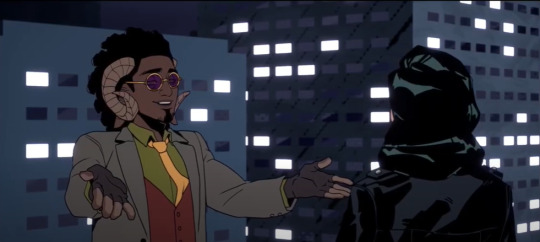
Folks found the stuff about old mythology and Persephone interesting... so let me do Pan. So, as I said: Persephone is a very old goddess who might well be one of the first in the Greek pantheon. But... She is not as old as Pan. Because within Europe Pan might in fact be the oldest god that we know about. In fact he very probably predates the ancient Greek religion and was just so popular, that the Greeks just decided to keep him in the pantheon.
How do we know that?
This is the moment, where this geeky twink squeals with excitement, because he gets to talk about proto-indo-european stuff. So, allow me for a moment: SQUEEEEEEEEE! 🥳
Okay. That needed out.
So, what you need to understand is that most mythologies from Europe, Asia and Northern Africa you know about are actually decendents of the same mythology. Talked about this in regards of the Roman Gods not being the Greek Gods. But... yeah. So, there was once this culture, who we call the Proto-Indo-Europeans and they had the great idea of putting wheels on things and the things behind horses and then got around a lot. And wherever they went, they brought their language and mythology with them, which is why the Indo-European language family is so fucking giant.
We can see some of their stuff shimmer through in common themes in mythology. Like, almost all the mythologies in Europe and Asia have a "sky daddy", aka a godly father figure who is associated with the sky. He is not always the big guy of the pantheon, but he is important in all the cases.
And while when we talk Greek, Egyptian, Roman or even Chinese and Hindu mythology we have a surprising amount of writing going on that dates back at times more than 3000 years... the earlier we go, the less writing there is.
Now, with Pan we have some stuff in Mycenean art and what not, that hints that he was around at least as early as 1700 BC, though - obviously - we do not really have written sources going back to this time.
But there is also the fact that... One of the earliest mythologies to split from the Proto-Indo-European one is the Hindu mythology. An the Hindu mythology has Pushan, who is not only associated with the same stuff (pasture, roads, travel, the wild and so on), but also has some goat imagery in older versions. Just like Pan. And if you look at the names P(ush)an you can see there is a parallel. Which makes those geeks who study stuff like that for a living fairly certain that those two once were the same god. A god they call *Péh₂usōn. And no, I will not go into Proto-Indo-European language right now.
The word "pasture" in English comes from the same Proto-Indo-European word, by the way.
Current theory goes, that Pan was actually worshiped by the pastoral people living in Greece before the advanced Greek civilization spread. And given that Pan was associated with so many aspects the folks were not giving him up. So, as it goes with pantheons... He just got integrated into the pantheon as was........ though he got split into two pieces. But... Gotta talk about his other piece tomorrow.
Maybe due to the age of Pan, but maybe due to him turning into mostly a god of wilderness, he tends to be a much more openly manecing deity compared to other gods. While most polytheistic cultures absolutely feature an aspect of: "Our thing is that we bribe gods into being nice with us, because those gods are so freaking dangerous," most of the pantheon gods are actually mostly cultured. Even if they are horndogs like Zeus.
Pan meanwhile is a god of the wild. He has this animal imagery (that probably all early gods had) still very present, he gets associated with all sort of wild behavior in humans, and of course the word "panic" comes from Pan. Because it is said that his scream could create panic in the humans.
Enough geekery, lets get back to Stray Gods. Because other than with Persephone's situation I am fairly certain that at least some of this was known to the creators, given the role Pan plays as someone who is not quite inside of the Chorus and acts more as an outsider to it.
68 notes
·
View notes
Text
Mythological Horse Tournament
Contestants list - Submissions are closed.
Group 1
Bäckahäst (Norse Folklore) - Eliminated Round 3
Kelpie (Scottish Folklore) - Eliminated Round 1
Hippocampus (Greek Mythology) - Eliminated Round 2
Cabbyl-ushtey (Manx Folklore) - Eliminated Round 1
Ceffyl Dŵr (Welsh Folklore)
Each-uisge (Scottish Mythology) - Eliminated Round 1 Bonus
Four Horses of the Apocalypse (Christian Mythology) - Eliminated Round 1
Mari Lwyd (Welsh Folklore) - Eliminated Round 2
Tikbalang (Philippine Folklore) - Eliminated Round 1
Longma (Chinese Mythology) - Eliminated Round 3
Orobas (Christian Mythology/Demonology) - Eliminated Round 2
Balaam's Donkey (Jewish mythology, Christian Mythology) - Eliminated Round 1
Zodiac Horse (Chinese Mythology) - Eliminated Round 4
Zodiac Sagittarius (Greek Mythology) - Eliminated Round 1
Group 2
Nessus (Greek Mythology) - Eliminated Round 1
Chiron (Greek Mythology) - Eliminated Round 2
Arion (Greek Mythology) - Eliminated Round 1
Black Horse (Canadian Folklore) - Eliminated Round 2
Árvakr and Alsviðr (Norse Mythology) - Eliminated Round 1
Sleipnir (Norse Mythology) - Eliminated Round 4
Hrímfaxi (Norse Mythology) - Eliminated Round 1
Skinfaxi (Norse Mythology) - Eliminated Round 3
Trojan Horse (Greek Mythology) - Eliminated Round 1
Uchchaihshravas (Hindu Mythology) - Eliminated Round 2
Uffington White Horse (English Folklore) - Eliminated Round 2
Balius and Xanthus (Greek Mythology) - Eliminated Round 3
Pegasus (Greek Mythology) - Eliminated Round 1
Unicorn (Possibly Asian???)
Submissions are closed.
Requirements are:
- Their primary form must be at least 50% horse or more (this means shapeshifters are welcome but they must primarily be depicted as a horse or horse-esk.)
- They must be depicted in Folklore or Mythology in one way or another.
27 notes
·
View notes
Text
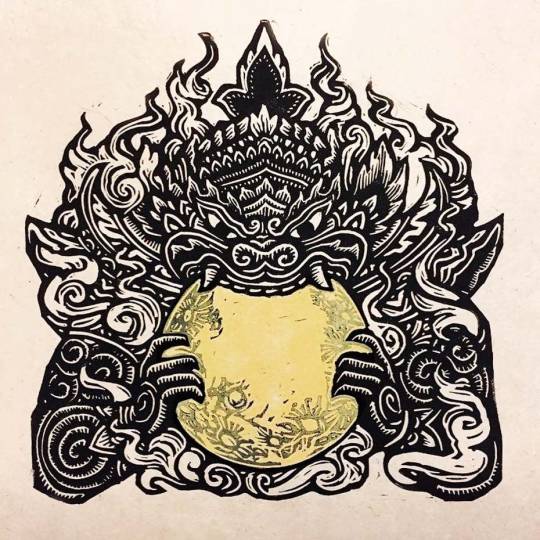

Rahu
In Hindu tradition, Rahu is a severed head of an asura, that swallows the sun causing eclipses. He is depicted in art as a serpent with no body riding a chariot drawn by eight black horses. Rahu is one of the navagrahas (nine planets) in Vedic astrology and is paired with Ketu. The time of day considered to be under the influence of Rahu is called Rahu kala and is considered inauspicious.
Rahu Yantra
Drawing by Anton Ovchinnikov
In Hindu mythology, Rahu is a snake that swallows the sun or the moon causing eclipses. He is depicted in art as a dragon with no body riding a chariot drawn by eight black horses. Rahu is one of the navagrahas (nine planets) in Vedic astrology. The Rahu kala (time of day under the influence of Rahu) is considered inauspicious. According to legend, during the Samudra manthan, the asura Rahu drank some of the divine nectar. But before the nectar could pass his throat, Mohini (the female avatar of Vishnu) cut off his head. The head, however, remained immortal.
32 notes
·
View notes
Note
Okay, so, Sandman hc request:
In the comics, we see Morpheus interact with Greek, Roman, Norse, Egyptian, and even Japanese god/s. What other pantheon/tradition do you imagine him dealing with? Which gods/characters in particular? And/or how do you see him fitting into other cultures' pantheons? Based on previous discussions, I'm thinking particularly Filipino or Chinese traditions, but please pick whatever culture/pantheon you like!
OH YEAH THIS IS UP MY ALLEY
(Note: I am not well read on every mythology I mention - I am mentioning some that I don’t know as a way to open up a conversation in the fandom on how we can view Dream (and all of the Endless) in less Eurocentric ways. If I get anything wrong, I can accept it, as long as we can keep expanding all the ways the Endless can be and all the people they can represent ❤️)
Something I always felt was lacking in Sandman was like. I mean this is beef I have with classical studies/classical mythology in general. The ancient world was SO CONNECTED and to view only the Greek/Roman/Egyptian people as connected is a deeply unfortunate retcon
I mean. Lmao treehouse spoilers I guess??? But not really.
I definitely think Morpheus has interacted with Chinese gods, Hindu gods, Sumerian gods, Aztec gods/gods of the Mexica, among others
I also (and this wasn’t included in the scope of your ask but imma do it anyway) firmly believe he has been involved in a variety of urban legends/copypasta, even when he was in the bubble
So going off of his association with Apollo, one of the foremost Greek gods, god of the sun/healing/arts, I think one name Dream could have been known to the Mexica is that of Piltzintecuhtli
Piltzintecuhtli is (according to the internet) the god of the rising sun, healing, visions, medicine plants (like hallucinatory mushrooms). He can be called the Youthful God.
So this is something I’m going to have in treehouse I just decided it but… I believe that to the Chinese people, Dream has appeared in the shape of a blue dragon.
According to legend, we were taught calligraphy by a dragon horse who appeared to Fuxi, a great hero and progenitor of Chinese culture
And dragons in Chinese culture aren’t just beasts. Dragons are gods, they’re spirits of great intelligence, culture, rain, good luck, victory, power, they were the arbiters of the Mandate of Heaven (which granted emperors of old the right to rule)
So I believe Dream would have come to us as a dragon god, one who might have influenced the development of calligraphy, and I will be making him a dragon at least once in treehouse
Lastly, I HC Morpheus as being responsible for The Backrooms™️ creepypasta
“If you're not careful and you noclip[a] out of reality in the wrong areas, you'll end up in the Backrooms, where it's nothing but the stink of old moist carpet, the madness of mono-yellow, the endless background noise of fluorescent lights at maximum hum-buzz, and approximately six hundred million square miles of randomly segmented empty rooms to be trapped in
God save you if you hear something wandering around nearby, because it sure as hell has heard you”
THANK YOU SO MUCH FOR YOUR ASK FRIEND I LOVE YOUUU
#the sandman#sandman#dream of the endless#sandman comics#the sandman comics#sandman tv show#the sandman tv show#lord morpheus#Morpheus#headcanons#1k headcanon game
29 notes
·
View notes
Text
Astrology portrait :)


°•°•°•°•°•°•°•°•°•°•°•°•°•°•°•°•°•°•
Your Astrology Portrait: This is where the idea of an Astrology Portrait comes up that would help you define your Aura, Silhouette, Broad Features & Fine Details just like a Portrait where the artist can help you look into the soul of the subject.
°•°•°•°•°•°•°•°•°•°•°•°•°•°•°•°•°•°•°•
Your Aura – It is usually a vibe or a feeling & is determined by the actual degree of Moon that you were born in, defining the Instincts & the Vibe that you give out. Vedic Astrology & Hindu Mythology classify all living beings in the category of a Demi God (Deva), a Human (Manushya) & Demonic (Rakshasa). Each type is born with a value system that neither upbringing nor background can change. It is one of the most important aspects of your personality as well as a reason for what & who you are like in your lifetime.
°•°•°•°•°•°•°•°•°•°•°•°•°•°•°•°•°•°•
Your Silhouette – This is how you look to people who don’t know you & judge you from a distance. It is determined by two factors: your Ascendant Nakshatra & the broad animal kind that your instincts are linked with just like the Chinese system of Astrology. Each of us is classified by an animal type like the Lion, Elephant, Horse, Snake, Mouse, Mongoose, etc. These are the instincts that are inborn and perhaps one of the reasons why we take an instant liking or dislike towards a person even without getting to know them well.
°•°•°•°•°•°•°•°•°•°•°•°•°•°•°•°•°•°•
The Broad Strokes & Outline – It is how you look to your colleagues & friends and marks the boundaries & limits that you would be able to achieve in this lifetime. The exact degree of your Ascendant, your Moon sign, the waxing or waning status of your Moon, & the degree of the mid-heaven at the time of your birth define this area. These aspects set your potential, the size of your horizon & how high you can soar.
°•°•°•°•°•°•°•°•°•°•°•°•°•°•°•°•°•°•
The Fine Details –This is the level at which your soulmate, spouse, family & you yourself know you. It is a DNA defining level determined by:
12 Houses – that influence status, family, wealth, name, ownerships, intellect, children, health, spouse, love, partners, age, luck, God & spirituality, career & profession, friends & enjoyment, sex, expenses & the unknown realm. The strength & relations of each house help determine those parts of our life where we excel, are contented, average, troubled or face difficulties. Certain portions of the Zodiac, if stronger, make for a self, family, spouse, career, sex, or spiritually oriented person.
Nine Planets - that rule our destiny. We see that a strong Sun & Saturn help one to rule destiny while Mars can force its way through destiny. Jupiter & Venus help us make our destiny by education & wisdom while Rahu can help find the diplomatic way out & Ketu the intuitive or technical way. True greatness & progress depend on which planet is with you & which one against.
°•°•°•°•°•°•°•°•°•°•°•°•°•°•°•°•°•°•
Dasa - or your Dasa cycle determines when your promised destiny would fructify, since timing is everything in life.
°•°•°•°•°•°•°•°•°•°•°•°•°•°•°•°•°•°•

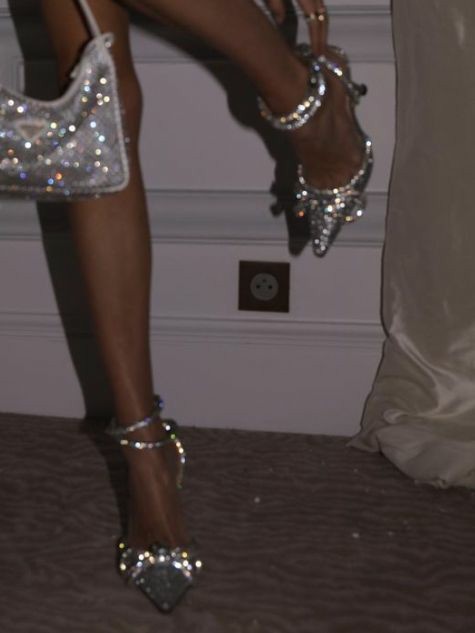
[ credits to rightful owner 《 none of them are on tumblr though 》 ]
#astrology#writing#spirituality#art#ask blog#education#celebrities#astro observations#astrology observations#astrology basics
142 notes
·
View notes
Text
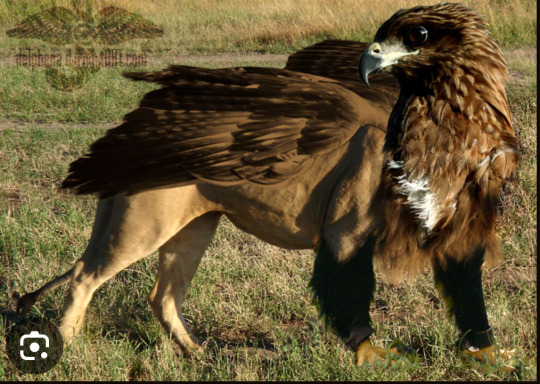
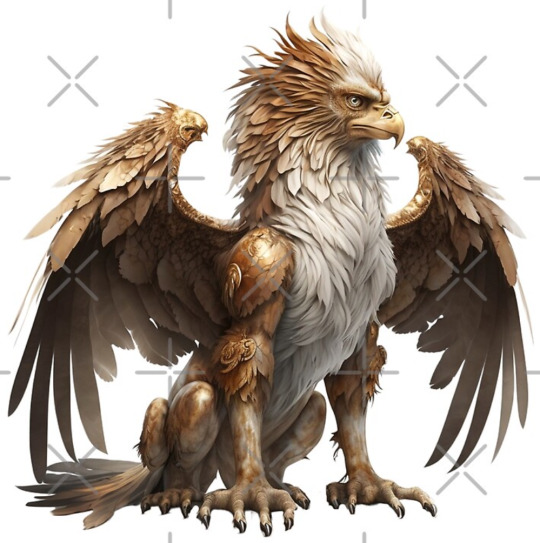

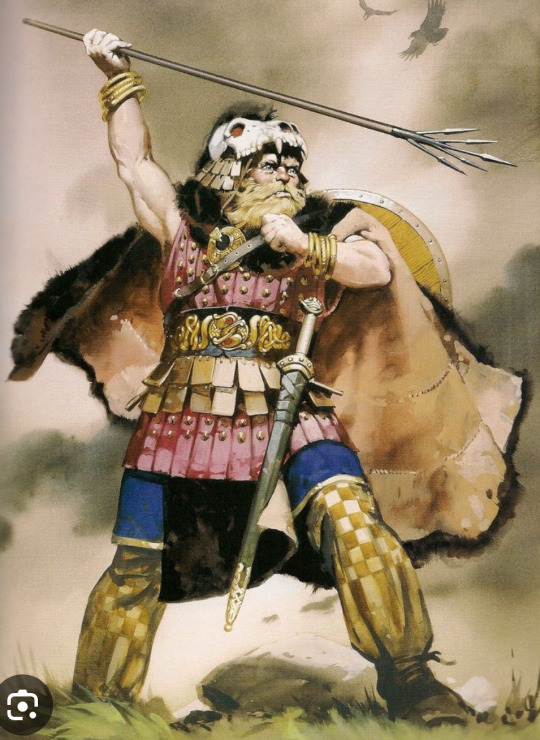

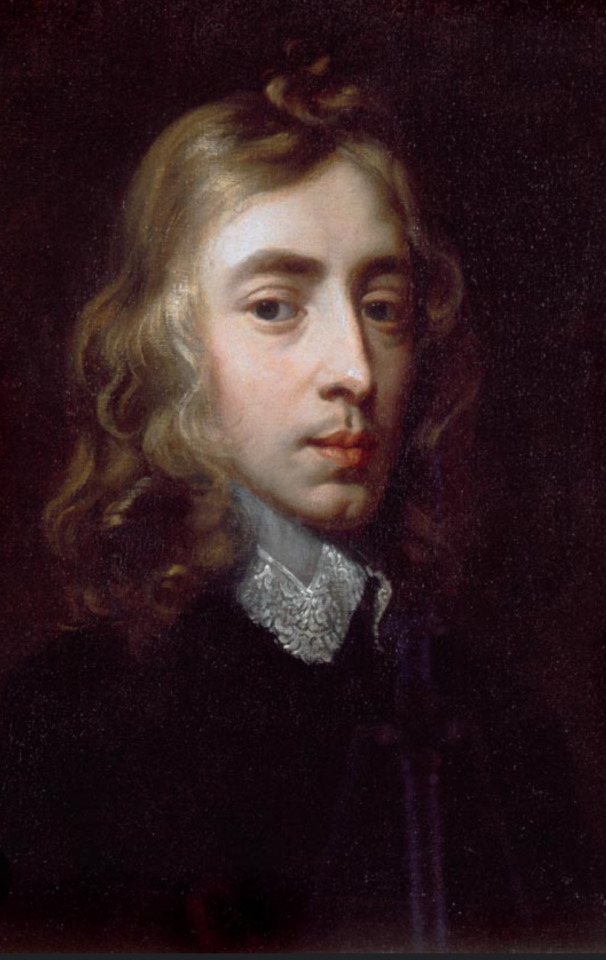

Pics:
1 & 2. Modern renditions of 'realistic' griffins¹. Like dragons, they were supposed to guard loads of gold!
3. Simple diagram that places the Greek mythic 'world' at the extremes - away from the Mediterranean Sea.
4. Drawing of what a Hyperborean² supposedly looked like.
Reminds me of the much later Viking raiders...
5. The face of the 1-eyed Arimaspian³ 'people.'
They were mounted warriors who sought out & fought over griffin gold.
It looks like a Hindu god with its 3rd eye (of wisdom) open...
Hmm.
The idea of griffins did come from India...
6. John Milton⁴, extraordinary British poet - in the 1600s.
7. Collection of Milton's epic Biblical poems!
1914: Output.
Intro: "Gryphus in Asinum Mutatus⁵" is the last poem that Lovecraft wrote in 1914.
It takes Howard back to his early childhood, when he read Ovid's "Metamorphosis" & HPL thought that he was a 'real' pagan.
Lovecraft actually believed that he saw a satyr (man-goat) & a nymph (minor nature goddess) in the back lawn of his grandad's mansion!!
Howard was so inspired that he wrote several short poems.
One about the Roman's (Ovid) work, another on the ancient Greek Iliad & the last on the Odyssey.
But, this 1914 work claims to show how a griffin turned out to be a real ass...
It's an amusing satire based on Ovid's idea of eternal, magical 'changes' thru out time.
And, it does show off HPL's deep knowledge of classical mythology & English verse.
It's a little known effort, nowadays.
With little professional commentary.
The Work, Part 1: Lovecraft's intro!
(Howard introduces the idea of a griffin, where it came from & gives a quote from Milton's 2nd book of "Paradise Lost⁶.")
(HPL also mentions "the Blarney⁷ or North Carolinian species" - of the North American donkey⁸!)
A gryphon or griffin is a mythic animal with the body of a lion - plus, the head & wings of an eagle.
Such griffins dwelled in the Riphaean Mountains⁹, which were situated north of Scythia (Asian stepple area), between the blessed Hyperboreans & the 1-eyed Arimaspians.
These mounted cyclopes¹⁰ attempted to steal that gold, an action that resulted in the hostility between horses & griffins!
Milton, in his 2nd book of "Paradise Lost," refers to:
"A griffin thru the wilderness, winged... over hill & moor(-like) dale..."
"Pursues... (an) Arimaspian, who by stealth, Has from (the Griffin's) custody, purloined it's guarded gold."
Next: Part 2, Notes.
3 notes
·
View notes
Text
2 of Cups. Mystic Spiral Tarot


Themes and Keywords: Nurturing. Agape versus Eros. Preparing for pregnancy. Maternal care. Pledging troth. Entwining. Union of polarities and the result. Romance. Harmony of male and female. Partnership. Mirroring. Mutual attraction. Interest/excitement.
Astrology/Element
Cancer decan I combines the motherly moon as ruler of cardinal water sign Cancer, with feminine Venus as ruler of the decan. Cancer is a protective and maternal sign, associated with the womb and breasts. Venus is the goddess of love and attraction, encouraging harmonious union. Yet as a two, it is also associated with the supernal masculine, as well as with themes of polarities encountering each other. This merger of the sexes is bound to be fruitful.
Agrippa’s decan image is appropriately feminine and Venusian, featuring a youthful crowned virgin in fine clothes. The signification speaks of acute senses, perhaps the feeling nature of Cancer, and mentions specifically the love of men. The Picatrix imagery is less clear, telling of a man with distorted fingers and head, perhaps a supernal reference to yod and Kether, from which the twos descend. His horse-like body could relate to the seas of Cancer, and his white feet and fig leaves are vaguely Venusian. The significations at least mention love.
Dolphins are associated with Venus and the womb (Cancer); here they are paired as argent (silver) and or (gold). (Rosetta Tarot)
Mythology/Time of Year
Untainted love stories are appropriate here. Homer’s Odyssey tells of Penelope’s marital fidelity to Odysseus and her determination to preserve both her marriage and her son’s legacy despite Odysseus’s long absence.
Venus’s maternal side shows in Aphrodite’s protectiveness toward her son Eros. The mortal Psyche had offended Aphrodite, who sent her son Eros to cause Psyche to fall in love with something hideous. But Eros fell prey to his own arrows and fell deeply in love with Psyche. After many trials from Venus, the tale has a happy ending when Psyche is made immortal and allowed to wed Eros.
Silver (lunar) and gold (solar) cups, red and white roses: symbols of the alchemical marriage or union of opposites traditionally associated with the card. (Universal Wirth Tarot)
Goddesses who protect children also apply. Hindu Parvati was the wife of Shiva, and goddess of love, children, marriage, and devotion. Parvati and Shiva are often portrayed as the Shiva linga, the conjoined yoni and lingam that represent the interdependence of the male and female forces in the regenerative process of life. Parvati’s prakriti (feminine nature) joins Shiva’s purusha (male consciousness).
The decan begins at June solstice, when baby animals flourish.127
Susan T. Chang
3 notes
·
View notes
Text
Hecate: How To Work With The Goddess Of Magic & Necromancy
BY TEAANDROSEMARY2
JANUARY 4, 2022 APRIL 8, 2022
DEITIES/WITCHCRAFT
Hecate is the Greek goddess of witchcraft, magic, necromancy, and spells, so it’s no surprise that the worship of this archetype has boomed in popularity with the dawn of a new era of witchcraft.
In the Underworld, she guides those who have passed on, lighting the way in the darkness with her torch as she once did to find Persephone.
Whether or not you believe in or worship this goddess, it’s hard not to adore her more and more with each fascinating story of feminine badassery, unbridled kindness, and acceptance that she brings forth.
The Goddess Hecate In History & Myth:
Hecate is a chthonic goddess born of titans and has existed since long before the creation of Mount Olympus.
She’s such an ancient deity that there’s quite a bit of confusion surrounding who her parents were – although much credit is given to the titans Perses and Asteria. Some texts say that she was a daughter of Zeus, but others speak of her as the very midwife who aided in his birth.
Nevertheless, Zeus adored and honored Hecate enough to allow her to maintain power over heaven, earth, and sea once he staked his reign over the gods.
Hecate & Persephone
Regardless of how you interpret the story of Persephone and Hades, when Demeter discovered her daughter was missing, goddess Hecate showed up with torches blazing to light the way back into the Underworld and find her. When they did, Hecate hugged her, held her close, and swore companionship to Persephone in her return to the Underworld.
To this day, Hecate roams Hades with the Lampades, her loyal torch-bearing nymphs, who act as handmaidens to Persephone during the cold months below. She also guides spirits crossing over so that they too may find their way in Hades.
Hecate As The Triple Goddess
In many ancient artworks and statues, we see Hecate depicted in triplicate. In some texts, she possesses three heads or faces, or even three separate forms entirely.
Hecate also shares distinct commonalities with the goddesses Artemis and Selene, and their epithets are used almost interchangeably in late Roman texts.
But it’s not only Greek and Roman mythologies with tales of triadic deities. We also see Brigid and the Morrigan of Irish culture, the Libyan serpent goddess Anatha, Zorya of Slavic lore, and the Hindu Tridevi represented as triple goddesses at times.
More famously, we see the ever-present holy trinity in the Christian faith, and some modern Wiccans have adopted Hecate as their maiden-mother-crone archetype.
Why is the number three so significant?
Using numbers as symbols has been practiced all over the world since before recorded history. In Greek numerology, the number three represents harmony and unity. We see the trinity echoed in many other cultures, often representing the omnipresent and all-knowing.
In some cultures, the trinity represents birth, love, and death; waxing, waning, and full moons; the maiden-mother-crone archetype; past-present-future, or even the mind, body, and soul.
Hecate’s Appearance:
The goddess Hecate sometimes wears a short dress and hunting boots, much like the Goddess Artemis. In other depictions, she dons a floor-length gown and bears a torch in one hand and a serpent in the other.
Godess Hecate’s statues often appear in triplicate, posed back-to-back as if standing watch over a three-way crossroads.
Other records describe her as a terrifying monster with three necks or heads – a horse, a dog, and a lion head, respectively.
Hecate is almost always portrayed with black dogs by her side. It is even said that she has taken the form of a dog herself.
Hecate’s Powers:
Hecate has power over all realms of existence – the earth, heavens, and sea – and walks the liminal spaces in between. As such, she holds dominion over thresholds, gates, hedges, and boundaries of all kinds. She then helps us to build personal boundaries and challenges us to invest in and take care of ourselves.
As the Witch Mother, goddess Hecate is powerful in all realms of magic and sorcery and has a deep sense of intuition. If she chooses to lend her favor to your craft, then your manifestation abilities can become more powerful than you have ever imagined.
With a mighty reign over the Underworld and the domain of necromancy, Hecate is the deity you want to have by your side if you have an interest in reaching out to those who have crossed beyond the veil. Through working with her, we can unlock the secrets of life, death, and the liminal space, and learn to safely and respectfully commune with spirits.
Not only a guardian to souls who have recently passed on, Hecate also attends to women and children and oversees childbirths. Travelers and sailors may also find themselves in her favor if they’re lucky.
Along with Artemis, Hecate is a goddess of the wilderness, which holds a trove of magic and wonder in its own right. In her ties to Selene, she harnesses the moon’s powers of regeneration and deep intuition.
Hecate is also an herbalist who honors the use of medicines, poisons, and even psychoactive plants in practicing one’s craft.
How Do You Know If The Goddess Hecate is Calling To You?
Although you can theoretically call upon a deity with extensive amounts of worship, deities often reach out to us when they want to work with us.
The Goddess Hecate tends to reach out in very subtle ways. It can be difficult to determine if she is the goddess reaching out to you, but there are a few specific tells.
Some of the indicators that the Goddess Hecate is reaching out to you include:
1. She comes to you in your dreams. This may be in the physical/personified form or as a symbol.
2. You’ve found yourself doing more shadow work. Hecate challenges us to acknowledge the darker parts of our being in order to become the best forms of ourselves. In learning to embrace these difficult parts of ourselves, she teaches us how to be truly whole.
3. She called out to you in times of darkness or great distress. As the torchbearer, it’s not uncommon for Lady Hecate to reach out a helping hand in times of dire need. If you’re facing the Dark Night of the Soul, this chthonic deity will help you to get back up and see the light.
4. You are undergoing a difficult transformation. If you feel like you’re going through a tough transitional phase in your life, then the goddess of the crossroads may be reaching her hand out to you.
5. You’re seeing her symbols everywhere. If you’ve been encountering more animals and symbols associated with goddess Hecate then it’s very possible that she may be reaching out. It might also mean that the animal is just more active this time of year, so be sure to do your research of the local flora and fauna before assigning any sort of spiritual significance to something.
Symbols Of Hecate:
Dogs, particularly black dogs.
Deer
Polecats
Snakes and the Ouroboros
Spiders – although this is more of shared personal gnosis rather than something taken from historical texts.
Torches
Keys
Rope
Hecate’s Wheel
Sickles
Crossroads
Triple Moon imagery
Daggers or athames
The number three
How To Work With The Goddess Hecate:
The goddess Hecate is known to be very particular about those with whom she chooses to work. If she doesn’t see that you’re willing to put in the time and effort, Hecate won’t waste her time on you either.
It’s also imperative to cleanse yourself before approaching Hecate. I do this out of respect for her, but I also think she encourages her worshipers to practice self-love through acts of cleanliness and mindfulness by asking this simple task of them.
Dating back to the Chaldean Oracles, it’s clear that Hecate favors the virtuous, and expects her followers to show kindness and integrity to others through acts of charity.
Hecate is not only the goddess of physical crossroads and boundaries but spiritual ones as well. In working with her, she will push you to set personal boundaries for yourself and provide guidance on the many crossroads your life path may have in store.
While this may all sound very cheerful, many know Hecate for having a darker side. Those who work with her may do so with the intent of working on their traumas through shadow work. Others choose to consort with this liminal goddess for her guidance in communing with the dead.
As the goddess of witchcraft, magic, and spells, I often evoke Hecate to ask for guidance on intent, stronger manifestation, and more effective spellwork.
One thing I’ve learned about working with Hecate is that you have to put in the physical work to see results – she won’t sugarcoat things for you or give you an easy ride. A great way to earn her favor is by performing mindful acts of devotion to show your commitment to her and her core principles.
Devotional Acts To Hecate:
Dedicate altar space to Hecate – this can be as simple as a single candle if you’re just getting started or if you need to keep it low-key.
Clean your home as part of a new moon ritual.
Plan, create and cast spells.
Perform other dark moon spells and rituals.
Light a devotional candle in Hecate’s honor.
Finish projects you started earlier in the month.
Volunteer at your local animal shelter.
Serve a local soup kitchen or food pantry.
Practice green witchery by taking care of houseplants and being mindful of your local ecosystem.
Clean up a cemetery.
Perform Hecate’s Deipnon.
What is Hecate’s Deipnon?
Deipnon is the Ancient Greek word for supper and is practiced by leaving a meal or offering for Hecate and the spirits of the dead.
Hecate’s Deipnon is typically observed on the night of the dark moon, but for me is a process that begins much earlier in the day.
Start with a New Moon cleansing ritual to purify the home, beginning by sweeping the halls and entryways. If you have dogs or other pets, collect some of their hair or claws from your dustpan to include in your offering.
I also like to take care of any other messes that I don’t want to bring with me into the next lunar month. This may mean different things depending on what needs to be done around the house.
Then, cleanse your home with incense, smoke, or bells, and ask for Hecate’s blessing and protection during the next blossoming of the moon.
Next, I gather my offering in a bowl or tray to prepare for nightfall. During this time, I like to make sure I’ve showered before I present my offering.
Offerings For Hecate:
These can be left as part of Hecate’s Deipnon, but offerings can be made at any time that works for you!
Garlic
Onion or leeks
Wine
Honey
Almonds
Grapes
Apples
Mushrooms
Bread or cakes
Fruit
Flowers
Bay leaves
Incense
Used up spell components
Crystals like moonstone or labradorite
A piece of paper with aspects you’d like to leave behind written on it
Plant debris, if you’re a green witch. (Avoid cuttings of invasive plant species!)
Strands of dog hair collected from your new moon sweepings
Other biodegradable materials gathered from your monthly cleaning
Anything that calls out to you! If you have a strong feeling that she’ll enjoy something, then it’s likely a sign that she wants it as an offering. Just make sure leaving it outside is safe for the environment and local ecosystem.
Once gathered, the offering is left at a three-way crossroads just before nightfall, and Lady Hecate would have you know that the poor, starving, and strays have just as much claim to it as she does.
When you arrive at the crossroads, create a circle of protection in which to leave your offering. Remember that this circle should protect the needy that may take from your bowl, not keep them from it.
All hail Hekate!
I am not the author, just sharing the knowledge.
Blessed be!
#witch#eclectic witch#witchblr#witchcraft#witchy things#witches of tumblr#beginner witch#hekate#triple goddess
11 notes
·
View notes
Text

Constantine XI: Emperor, mostly known as the last Roman (byzantine) emperor. Gentle and determined, he likes board games like shoji and chess
Ashwatthama: Born Brahmin who lead a life of a Kshatriya. Character from the Hindu epic Mahabharata who participates in the war between the Pandavas and Kauravas. His story is about revenge, the difficulty of being 'good', the guilt and consequence of actions, justice, rage, and punishment amongst other themes. A man with the spirit of a warrior though sometimes he can get a little too heated about things. Despite this, for someone who claims to be the avatar of rage, he is rather calm usually.
Vlad III: Was a prince and ruler of Wallachia (Romania) most commonly recognized as Vlad the impaler. In fate his story is intertwined with that of vampires as he was part of the inspiration for Bram Stoker's story 'Dracula'. 'He is unmistakably a king and is always pompous. He never let go of the attitude that he is king and his Master is the subordinate.'
Jason: From Greek mythology, Jason was the captain of the argonauts, the most ambitious crossover story where Jason gathers a bunch of greek heroes on his ship (like Hercules, Castor and Pollux, Medea, Orpheus, Theseus, Atalanta, Achille's dad peleus, etc etc) to retrieve the golden fleece which will allow him to finally take possession of the throne he is the legitimate heir of. He is kind of an ass and depends a little too much on his teammates but he shines as a captain and leader when he is pressed against a corner and his life is being threatened. Don't think too much about his outfit.
Camazotz: Bat god from Maya mythology. He resides in the house of the bats, one out of the five houses that reside in Xibalba (the underworld), which is stacked with tests and trials. He finds it funny when people make fools out of thmselves but hates being called out on it when it happens to him. A bit grumpy and unpredictable. He loves mangoes and playing ball games.
Odysseus: Also another greek hero from the popular epic poem 'the odyssey' by Homer. It tells the story of Odysseus, one of the men who fought in the Trojan War, and his struggles with coming back home after the war ends. He faces a lot of challenges on his way back and ends up doing 8475487456 turns before reaching home. Terrible with directions but very cunning. Has a boob window. He also came up with the idea of the Trojan horse! Everyone falls for him.
Tezcatlipoca: Aztec god associated with duality, obsidian, conflict, the night sky, hurricanes, smoking mirrors, warriors, jaguars, war and much more. He also takes a big role in the myth of creation. In fate he is quite the definition of duality, he'll do whatever he wants and follow his own rules, he's quite fond of warriors and modern weapons like guns. Owner of a collection of cheap gas station sunglasses.
Charlemagne: Also referred to as an emperor, he was the king of the Franks; he united a large portion of western and central Europe, he's often referred to as the father of Europe but you can (and please do) call him Charlie. He likes awesome and cool things and he has trouble reading. Always peppy and enthusiastic.
Moctezuma II: An Aztec emperor and one of the last ones before the fall of Tenochtitlan. The first contact between the Europeans and the civilization of Mesoamerica happened during his rule so he is often recognized as the emperor who established the first contact with the Spaniards + one of the last ones. He is always somehow frowning or looking a bit too stern even when he is calm, and he carries a lot of rage and guilt inside of him. He respects Tezcatlipoca a lot and he likes drinking hot chocolate a bit too much
#;about#about#PART ONE- i should have just made these tbh#if u click on their names u get to see their f.ate designs!#personals pls do not reblog!
5 notes
·
View notes